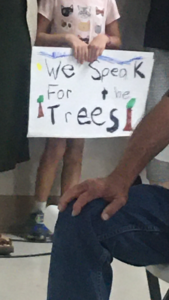 More than 20 years ago, the Bridgestone-Firestone Corporation donated 10,000 acres of heavily forested land in and around Scott’s Gulf in White County to the people of Tennessee to be used as a recreational wilderness.
More than 20 years ago, the Bridgestone-Firestone Corporation donated 10,000 acres of heavily forested land in and around Scott’s Gulf in White County to the people of Tennessee to be used as a recreational wilderness.
Now the Tennessee Wildlife Resources Agency (TWRA) wants to convert a portion of that property into grassland with the hope that several endangered plant and animal species, notably bobwhite quail, will propagate and thrive there. The agency has described closed-canopy, old growth forests, precisely what you’ll find in the Bridgestone-Firestone Centennial Wilderness, as “biological deserts that are not good habitats for most wildlife species because of the absence of ground vegetation.”
The agency wants to initially remove hardwoods from 230 acres. (They don’t use the term “clear-cut” because the plan is to allow at least two trees per acre to remain.) Plans are for the number of converted-to-grasslands acres to expand to a thousand or more by the time the project is complete. One hundred percent of the profits from the sale of the trees will go to the TWRA, not to the state’s general fund.
Not so fast, say many folks who consider the Bridgestone-Firestone wilderness the crown jewel of the Cumberland Plateau. Cutting these trees will alter this breathtaking landscape for the worst for decades. It will destroy hiking trails, most notably the Jenny Branch, Polly Branch and Puncheon Camp Falls trails. Even trees that aren’t harvested may have their roots systems damaged or destroyed by heavy equipment, resulting not only in the loss of additional trees but also erosion and likely pollution of water sources, including the Caney Fork River. With the hardwoods gone, mast—acorns, hickory nuts and others—relied upon by so many wild animals will be gone, too. Deer hunters, turkey hunters and squirrel hunters will be negatively affected as a result.
Opposing sides faced off in a town hall meeting last week. I was part of the standing-room-only crowd of more than 200 people crowded into the Sparta Civic Center to listen to the TWRA argue their case for grasslands while the other side argued their case for leaving things exactly the way they are.
I learned a lot. Hundreds of native plant species lie dormant beneath the canopy of old growth trees because little or no sunlight reaches the buried-in-leaves forest floor. Imagine the wildflowers hidden there! Diversity of vegetation determines diversity of animal species. The “Four Bs”—bats, bees, birds and butterflies—need scrubby open spaces to prosper. This includes the northern bobwhite quail, the official Tennessee state game bird, whose numbers have dramatically declined since the 1950s due primarily to habitat loss. I quickly became a fan of grasslands, sometimes called “the forgotten landscape of the South.”
Yeah, but. I also learned that the TWRA controls one-and-a-half million acres statewide, including 3,000 acres largely covered in pine trees in nearby Van Buren County. Why not convert some of this acreage into grasslands rather than cutting the hardwoods in Scott’s Gulf? Might it be because hardwoods tend to bring in at least twice as much money as pines?
These questions and many others were asked at the meeting. Some of them were answered. Almost two dozen members of the audience spoke in favor of or against the TWRA conversion plan. The jury is still out, but the decision on what will happen to the acreage in question ultimately rests with the TWRA. But TWRA officials listen to members of the General Assembly. That’s why it’s important that you contact your legislators right away and let them know how you feel.
Here’s what I’ll say to Paul Bailey and Ryan Williams: Ask the TWRA to leave our pristine Bridgestone-Firestone Centennial Wilderness alone. Please-oh-please, put the grasslands someplace else.
(October 16, 2021)